




By Nate Skinner
For Lone Star outdoor newS
Hurricane Beryl made landfall along the Texas coast near Matagorda earlier this month.
The most extensive coastal destruction caused by the storm took place from Matagorda to Galveston Bay. Fishing guides and anglers are now hitting the water once again, and they
By Nate Skinner
For Lone Star outdoor newS
Crappie anglers are starting to experience a lull in the action as the dog days of summer set in. However, warm water temperatures aren’t the only variable provoking sluggish behavior. High water levels and current caused by water being let out of lakes seems to be making crappie harder to target and catch.
Avid crappie angler, Carl Ellis, said consistently catching numbers of big crappie has been tough on Lake Arlington and Lake Palestine where he’s been fishing lately. He believes it has something to do with the elevated level of these lakes, and the current created by water being let out of them due to ample summertime rains.
“In my opinion, crappie don’t
seem to like current,” Ellis said. “The fish have been staying hunkered down in brush piles, timber, and around other structure, and have not been feeding very aggressively. I’ve had to cover a lot of water to find fish that are willing to feed.”
On Lake Arlington, Ellis has been targeting brush piles in 12-20 feet of water. On Lake Palestine, he has been fishing for crappie around timber at depths of 20-30 feet.
“I’ve fished these lakes a lot over the years and can usually find and catch numbers of crappie consis tently,” he said. “This year things have been different, with all of the rain that we’ve had. I can find the fish using forward facing sonar, but
are finding plenty of hungry redfish and speckled trout in the wake of the storm.
Matagorda Bay-area guide, Capt. Glenn Ging, said things recovered fairly quickly around Matagorda after Beryl passed — as far as fishing was concerned.
“Local marinas and boat ramps are open, and Matagorda Harbor is back to function-
ing pretty much as normal,” Ging said. “Areas just to the northeast of us, like Sargent, Surfside and Freeport seemed to incur more structural damage.”
Ging actually returned to fishing just a few days after Beryl hit and found the fish right where he left them before the storm made landfall.
“There’s still some run-off
coming out of the marsh, but overall the fishing action has remained consistent,” he said. Ging has been fishing in East Matagorda Bay, where he is finding birds working over schools of trout in open water.
“We don’t usually experience bird activity in July, but Hurricane Beryl flushed a tremendous amount of baitfish and shrimp out of the


By Meghan Sharber
For Lone Star outdoor newS
Marketing Manager Madi Woodward recently was invited on a special hunt to test future Nosler products.
“I am very fortunate in my career with Nosler,” Woodward said. “I get to go on many hunts, and this was one of the hunts for work. We have some new rifles coming out this fall and this was an opportunity for us to get some content.”
The team visited Cibolo Creek Ranch in search of Texas aoudad. While this hunt alone is a dream itself, Woodward said the environment overall was breathtaking.
















































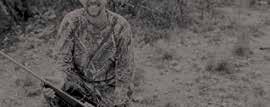











































































































































WHATEVER YOUR ADVENTURE IS, WE'VE GOT YOU COVERED.





By Craig Nyhus Lone Star outdoor newS
In one of the largest taxidermy conventions in the country, 235 taxidermists convened with 188 mounts and original art entries at the Texas Taxidermy Association, Inc.’s annual Convention and Competition in Killeen.
“Some years our competition entries exceed those at the national taxidermy convention,” said TTAI Secretary Marie Holdridge. “Vendors and judges regularly compliment the TTAI’s convention organization and efficiency. We have an
amazing board and volunteers who work diligently to assure a great event for our members.”
Competition divisions include Youth, Amateur, Professional, Masters and Studio.
Some of the winners were:
Youth Judge’s Choice
Naomi Richardson, Bluegill Best Gamehead
Jesus Garcia, Lord Derby Eland
Professional Trent Bartlett, Mule deer Best of Show and Masters
Jerry Huffaker, Hyena
The favorite for many taxidermists is learning from each other, whether at sem inars at the convention or just from visit ing with their fellow artists.
During the convention, 12 seminars covered a variety of topics, techniques and animals for both experienced and new taxidermists.
“After each convention we poll our members to see if the seminars met their needs and to solicit any suggestions,” Holdridge said. “One favorite seminar this year was conducted by Courtney Sha heen, a TTAI board members. It was Be ginners Techniques with a Q& A session.”

By Mike Bodenchuk
For Lone Star outdoor newS
At the Texas Wildlife Association annual meeting, researchers from the Borderlands Research Institute at Sul Ross State University described the current situation in the TransPecos regarding aoudad. Recognizing that aoudad are a valuable big game species, researcher Justin French described what he considered a vast overpopulation of aoudad, using the Chinati Mountains as an example.
The Chinati Mountains are a small range in Presidio County and are believed to have the highest density of aoudad in the Trans-Pecos. Looking at a 317,000-acre study area in the mountains, researchers used thermal imaging to estimate aoudad numbers. The population estimate of 7,881 aoudad revealed a density of one aoudad per 40.2 acres. Researchers also estimated mule deer populations at around 500 deer and “guessed” that there were 400 elk on the same range. When added to livestock, which weren’t surveyed but were estimated based on stocking rates, the researchers concluded the range was overstocked.
French said if the aoudad were the only thing to be removed, they believe the range would have to remove 2,585 aoudad to be properly stocked in a year with average rainfall, and 4,140 aoudad for the average drought year.
Problems with aoudad include competition with other native wildlife and the diseases they transmit.
While there aren’t desert bighorns in the Chinati Mountains, elsewhere in the Trans-Pecos aoudad share space with bighorns and can outcompete them for food and water. Because aoudad can breed almost year-long, it’s estimated that aoudad populations grow faster than bighorns. Habitat use mapping shows that aoudad and bighorns utilize much of the same habitat while the overlap between aoudad and mule deer is less.
On the disease front, surveys of aoudad in the Trans-Pecos show exposure rates to Mycoplasma ovipneumoniae, a bacterium that leads to pneumonia in bighorn sheep, can be as high as 64 percent, with up to 15 percent actively infected.
While aoudad are here to stay, researchers and landowners are looking at methods to control populations to lessen their impacts. While hunters value trophy rams, removing them does little for population management. Researchers are looking toward control of aoudad ewes as a necessary step in managing the population. Population growth studies, as well as the population level response to management, are two areas of further research underway at the BRI.
Another possible solution is to develop a market for aoudad ewe hunts. Getting hunters and landowners to come together on this issue can keep aoudad on the landscape at lower numbers, reducing competition with other species and pressure on native vegetation.


By Mike Bodenchuk For Lone Star outdoor newS
American Rounds has begun installing ammunition vending machines in Texas, with the first one in the Lowe’s Supermarket, in Canyon Lake on Sattler Road. American Rounds is a Texas-based company and has eight machines in stores in Alabama, Oklahoma and Texas, with more on order.
The machines have drawn both praise and criticism, predictably based on views on firearms. Critics are concerned about easy access to ammunition, while gun advocates praise the machines for the same
reasons. According to American Rounds, the machines have been placed in areas where access to a gun store may be limited.
The machines use state-of-the-art technology to not only deliver the ammunition, but to verify the eligibility of the buyer. While multiple boxes of ammo can be purchased at a time, each transaction requires the purchaser to scan a valid ID and present themselves to a built-in camera for facial recognition.
The facial recognition software is especially impressive, utilizing 92 points of recognition to make sure the purchaser is who their ID says they are. It also requires
the purchaser to smile or move their head from side to side to assure that a photo isn’t being used in front of the camera. If the scan fails to match the shopper’s face to their ID, the transaction is voided.
American Rounds Chief Executive Officer Grant Magers said the company doesn’t store or sell that data.
While each update to the machine requires an internet connection, the company says the machines only record the same information about the sale that a grocery store or other vendor would keep about any other sale (i.e. last four digits of the credit card, dollar amount of the


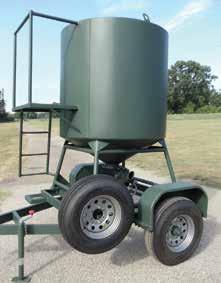























Each year, Carter’s Country Guns & Ammo and its Wildlife Heritage Foundation of Texas make a donation to the Texas Big Game Awards in support of the TBGA Wildlife Conservation College Scholarship.
The scholarship program is in its 24th year, and to celebrate that milestone, the Carters increased their donation. The top scholarship applicant received a $5,000 scholarship and regional recipients received a $2,500 scholarship toward their education in an agriculture or natural resources field of study.
This year’s top applicant was William Prochaska, of Blanket. Prochaska will graduate this year from Early High School to pursue a degree from Texas A&M Department of Rangeland, Wildlife and Fisheries Management. A past TBGA first harvest awardee, he has received various awards from the National Honor Society, Texas FFA Association, athletics and the Texas Brigades.
Heckler & Koch is marking its 75th anniversary with several exclusive civilian firearms offerings that pay homage to the HK legacy.
75th Anniversary Pistol sets
Each set includes one Flecktarn HK VP9 pistol and one Tropentarn HK VP9 pistol and is presented in a custom-cut polymer hard case, accompanied by a commemorative 75th Anniversary coin. Limited to just 1,000 pairs, these pistols will not be sold separately, ensuring their exclusivity and value.
75th Anniversary MR Series Rifles
Featuring limited edition MR556A1 and MR762A1 rifles, each available in Flecktarn and Tropentarn. With only 250 of each of these four variants available, these exclusive and unique models offer enthusiasts a rare opportunity to own a piece of HK history. Each rifle is tastefully engraved with the HK 75th Anniversary logo and is packaged in a custom-cut polymer hard case with a custom matching cerakoted knife and commemorative 75th Anniversary coin.
These collector’s models are inspired by the enduring partnership between HK and the German armed forces, the Bundeswehr, which spans over half a century. Pistols and rifles are custom cerakoted in Flecktarn and Tropentarn camo patterns still used by the Bundeswehr.
Both rifles and pistols are shipping now.
Deron Millman is the recipient of the 2025 Conklin Award.
Millman is the 23rd winner of this “Tough Man” award. He started hunting with his grandfather at age 10. Millman has hunted in 42 countries and taken 122 international hunting trips. He has taken 37 different Ovis species and 39 different Capra species and has been to Asia more than 36 times.
The award will be presented at the Wild Sheep Foundation’s Sheep Show on Jan. 17, 2025 in Reno, Nevada.



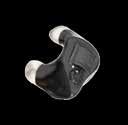
For going on 20 years, Lone Star Outdoor News has manned a booth at the Texas Trophy Hunters Extravaganzas. In August, TTHA will begin the organization’s 48th Annual Hunters Extravaganzas, making stops in Houston, Fort Worth and San Antonio.
Featuring the best in vendors, informational seminars, giveaways, attractions and activities, the extravaganzas will help prepare you for your next outdoor adventure.

“It’s great to see everyone who comes by, especially after a long summer and with hunting season on the horizon,” said LSON’s David J. Sams. “We learn where everyone is going dove hunting, what the new developments are in feeders, feed, blinds, optics and firearms. And we see plenty of interesting characters and have a great time.”
The 2024 Hunters Extravaganza dates:
• Houston Aug. 2-4 NRG Center
• Fort Worth Aug. 9-11 Fort Worth Convention Center
• San Antonio Aug. 16-18 Freeman Coliseum Expo Hall
With hundreds of exhibitors and tens of thousands in attendance, the shows are a tremendous success for the exhibitors and attendees as well as the host cities, and remain the largest, longest-running hunting and outdoor show in Texas.
“Hunters Extravaganza Shows provide an affordable opportunity for us to get our products into the hands of Texas hunters,” said Paul Moore, managing partner of Vineyard Max Deer Products. The Lord has blessed our business with back-to-back years of 100-percentplus growth. Much of this growth has come from relationships that we are developing because of the shows.”
The shows are known for promoting the newest and best in hunting products, accessories, clothing, rifles, knives, archery equipment and hunting gear. Exhibitors find these shows to be the perfect place to launch new products or services, sell hunts and gather market information, while attendees find it the perfect place to see and buy all their needs for the hunting season.


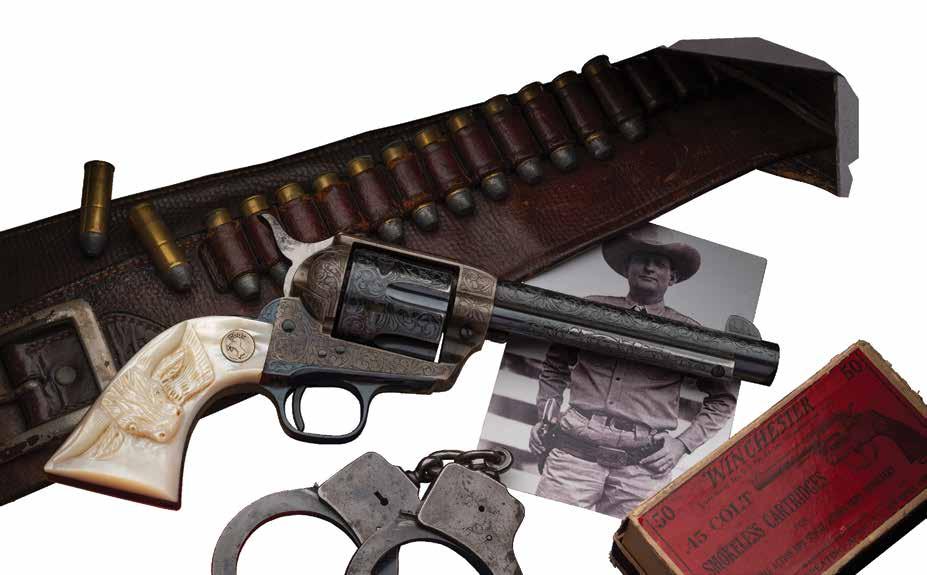

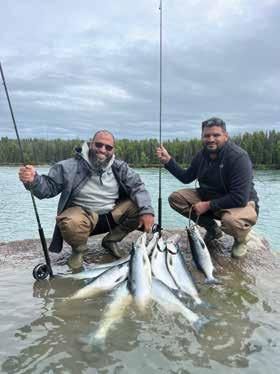
By Tony Vindell
For Lone Star outdoor newS
When salmon fishing in the Last Frontier State, most do as the Alaskans do. They don a fly rod and try floss fishing.
The technique requires no bait and no lure. Just a hook, a small weight and plenty of action.
On a recent trip after eight hours of flying, Soldotna-based fishing guide Tyland Van Lier took four anglers to a location on the Kenai River — one of Alaska’s best places for sockeye salmon fishing.
Less than 15 minutes from his camp at the end of a dirt road, Van Lier gave each person a fly rod and reel, and instructed everyone on how to cast as the salmon swam upstream toward their spawning ground and graveyard.
The fishing was as good as it gets, though some anglers were more skilled than others.
For Mohamed Karkuri and a friend, fishing couldn’t have been any better.
“We both got our limits,” Karkuri, who lives just outside Dallas, said. “We also got our halibut in Homer.”
But what impressed him the most was the fishing style he learned while fishing the Kenai River.
“We used no bait and no lures,” he said with a bright look on his face, “just a hook.”
The technique, known as flossing, is a way of hooking a fish in the mouth as it goes by.
The hook is cast within 25 feet of an angler as a salmon swims by with its mouth open. The weight causes the line to run through the fish’s mouth and the hook gets caught on the right side.
A small tug does the job.
However, a fish must be hooked in the mouth and it’s not to be confused with conventional snagging, which is illegal for salmon fishing.
The fishing style isn’t without controversy. Unpopular with some purist fly anglers, who call it snagging, it’s an accepted method in Alaska when the sockeyes, also called red salmon, are no longer foraging for food when going upriver. Essentially, it involves force-feeding the fish to cause a legal hook-up.
Van Lier said flossing has been used in Alaska for a number of years.
“I don’t really remember when it actually start ed,” said the 30-plus-year guide. “It has been a practice in Alaska for a very long time.”
Van Lier said he uses a Fusion circle hook in 2/0 and a 1/2-ounce weight when fishing for sockeye salmon.
He said the fish are currently on their second run in July and are plentiful and bigger in size.
The salmon go up the Kenai River toward the Russian River where they end up spawning and later dying.
Van Lier uses an ironing board set in the water for filleting fish, as state regulations do not allow fishing-related equipment on the ground.
Van Lier, who owns Alaska Fishing & Lodging, said July is the prime month for anglers to get their six sockeye salmon per day. August begins the time for silver, pinks, rainbows and Dolly Vardens.
Lone Star outdoor newS
At approximately 5:30 a.m. on Sat., July 13, a crash between a 43foot sportfishing boat, the Todo Bien, and the tanker Eagle San Antonio occurred near the intersection of Aransas Pass and the Lydia Ann Channel, according to the U.S. Coast Guard. There were four people aboard the boat, and the fishing vessel partially sank.
A good Samaritan vessel and the pilot boat for Port Aransas pulled
two survivors from the water and recovered the body of one victim.
After extensive searching for the fourth person by the Coast Guard, Texas Parks and Wildlife Depart ment, the Aransas Pass Police and others, including local boaters, the body of Jared Hunt, of Calallen, was later located and recovered by Nueces County game wardens at the mouth of the jetties.
After the wreck, the ship channel was temporarily closed so that the search could be conducted safely,
By Nate Skinner For Lone Star outdoor newS
Summertime redfish activity is heating up, right along with water and air temperatures. From shallow flats to open bay waters, redfish of all sizes seem to be on the move and feeding aggressively. In some areas, anglers have been able to stick to a consistent pattern to catch reds. In other locales, anglers have found red drum to be scattered and inconsistent from day to day.
In South Padre Island, Capt. Glenn Harrison said the redfish bite has been pretty steady. He and his anglers have been experiencing the best action in the late afternoon hours during an outgoing tide.
“There’s been an excellent topwater bite during an outgoing tide in transition areas from shallow flats to deeper water,” Harrison said.
“Stretches where mud banks transition into grass beds have been holding the most redfish, especially where the water depth drops off from about 12 inches to 2 feet.”
There have been good numbers of redfish tailing along spoil islands early in the morning, as well as pods of redfish hanging out around Gas Well Flats and the Three Islands area.
“Folks are catching plenty of reds on croaker and fresh cut bait in popular, high traffic areas,” Harrison said. “There are also good numbers of bull reds starting to show up around the jetties and along the surf.”
Rockport and Aransas Pass fishing


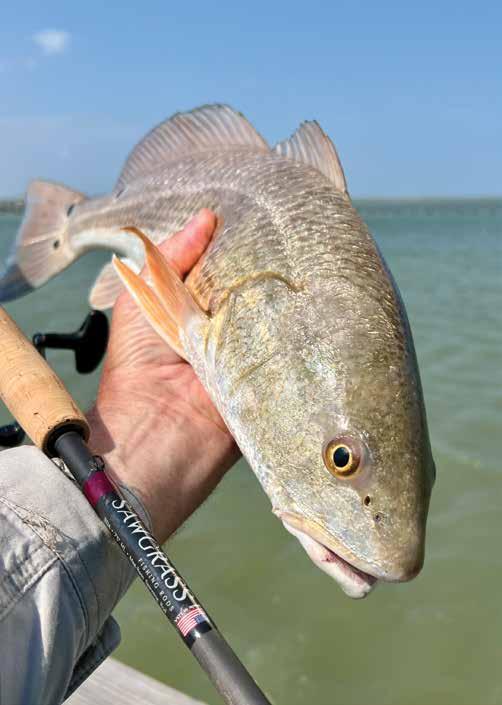
The beach changed after Hurricane Beryl passed through, improving the fish-
“There were lots of power lines down at the entrances to the beach,” said Connor Blaszka. “Dunes were gone or moved, there are new holes in the surf, and beach and sand was up to the main road.”
Shortly after the storm, anglers hit the beach and found the speckled trout unphased.
Blaszka has been surf-fishing on the
Galveston beaches for 8 years, and reported these may have been his best fishing days. Fishing the Friday and Sunday after the storm, the waves were light, 1-2 feet, and the water was a sandy green.
“I prefer these conditions even if they’re not seen as the most favorable,” he said. Blaszka was fishing a 7-foot inshore setup with a top-water lure.
“I was getting bites but they were small,” he said. “I switched to a jig head with a Down South plastic and really started catching them. I caught close to a hundred fish in just a few hours.”
Nathan Warner found more success on

By Vivian Leopold
For Lone Star outdoor newS
When is a slot limit not a slot limit?
When state legislators from nowhere near Lake Fork instruct Texas Parks and Wildlife Department to remove it. That’s what happened in 1999 at one of the premiere bass fishing lakes in the country.
It became a call to arms to concerned citizens and guides who formed Lake Fork Sportsman’s Association to protect the legend of Lake Fork. Area businesses formed Lake Fork Area Merchants Council. It thought lifting the then 16-23-inch slot for tournaments would bring more people, business and money to the area.
Chairman of the House Natural Resources Committee, Seguin State Rep. Edmund Kuempel, granted TPWD six experimental tournament exemptions starting in October 1999 as a “study” to determine how this would impact the mortality of fish. LFSA’s lawsuit/ request for a restraining order to stop the tournaments was denied by Travis County District Judge Margaret Cooper. Public sentiment quickly turned against the exemption to remove the slot limit.
The late Ray Sasser’s Outdoor column in The Dallas Morning News on Sept. 16, 1999 included this excerpt: “Here’s a news flash for the PR wizards at TPWD. The time to hold a public meeting is before you’ve made the public mad. It can’t deliver special laws to the 20 percent of freshwater anglers who participate in tournaments without making the other 80 percent mad.”
The initial results of the mortality rate for the four test categories were: Catch and release: 1.25 percent Control (bass caught before the tournament by electrofishing) 3.7 percent





The Lake Fork Sportsman’s Association promotes the lake and fought attempts to remove the slot limit on the lake. Trish and Raylee Copeland accept equipment from LSFA for Grand Saline’s high school fishing team, and Yantis
Cull fish: 14.89 percent Fish that made it through the weighin (a random sample of fish from the weigh-in and placed in large, netted holding pens for six days) 39.1 percent
Lake Fork Sportsman’s Association, whose members monitored the nets 24/7, is celebrating its 25th anniversary. LFSA was inducted into the Texas Freshwater Fishing Hall of Fame in 2018 for its work to protect and promote Lake Fork’s natural resources since 1999. Today, members work closely with both TPWD and Sabine River Authority to protect the fishery. The most recognizable project is its live release boat (LRB) that can be seen at most major bass tournaments. Manned by volunteers, oxygen and temperature levels of fish that have been weighed in are monitored, fizzed if necessary, and released back into Lake Fork. The survival rate for the fish using the LRB is about 99 percent.
Through a grant from TPWD, LFSA has worked with area high schools’ agriculture programs to grow aquatic grasses, build floating planters and fish attractors. Donations of rods, reels and tackle to area high school fishing teams who otherwise couldn’t participate help cultivate the next generation of anglers and conservationists.
A 25th anniversary event with speakers, videos and news clippings dating back to when adversity prompted Lake Fork Sportsman’s Association’s formation. It will be held Sat., Aug. 10 from 3–5 p.m. at Emory’s Rose Community Center and is open to the public.
Incidentally, back in 1999, none of the six tournaments were held. The slot limit was reinstated (it’s now 16-24 inches), the lawsuit dropped, and the merchants’ association disbanded.

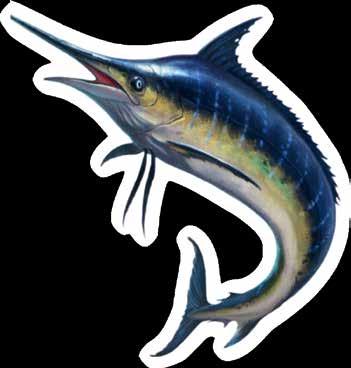


ALAN HENRY: Water clear; 83 degrees; 0.47’ low. Crappie are good on minnows.
AMISTAD: Water stained; 86 degrees; 69.99’ low. Largemouth bass are good on swimbaits, square-billed crankbaits, top-water poppers, Texas rigged worms and Ned rigs. White bass are good on spoons, white grubs and crankbaits. Stripers are fair on flutter spoons, big swimbaits, and bucktail jigs.
ARLINGTON: Water stained; 85 degrees; 1.81’ low. Largemouth bass are good on top-waters, chatter baits, crankbaits and Texasrigs. Crappie are slow. Catfish are fair on cut bait.
ATHENS: Water stained; 87 degrees; 0.33’ high. Largemouth bass are slow. Crappie are fair on jigs.
AUSTIN: Water stained; 85 degrees; 0.68’ low. Largemouth bass are good on weightless worms and Texasrigged worms.
B A STEINGAGEN: Water stained; 80 degrees; 0.72’ low. Largemouth bass are good on soft plastics and frogs. Crappie are good on jigs. Catfish are fair on shad.
BASTROP: Water stained; 90 degrees. Largemouth bass are good on top-waters, small swimbaits and Ned rigs.
BELTON: Water stained; 84 degrees; 3.45’ high. White bass and hybrid stripers are fair on pet spoons. Catfish are fair on cut shad, perch and chicken.
BENBROOK: Water stained; 80 degrees; 0.76’ high. Largemouth bass are good on soft plastics. Crappie are good on minnows. Hybrids are good on shad and minnows. Catfish are good on shrimp and stink bait.
BOB SANDLIN: Water lightly stained; 89 degrees; 0.17’ high. Largemouth bass are fair on top-water frogs. Crappie are good on jigs and minnows. White bass are fair on slabs. Catfish are good on stink bait.
BOIS D’ARC: Water stained; 85 degrees; 0.27’ low. Largemouth bass are good on creature baits, chatter baits, Texas rigs and Carolina rigs.
BRAUNIG: Water stained, 94 degrees. Largemouth bass are slow. Redfish are fair on live bait, shrimp and spoons. Catfish are good on cheese bait.
BROWNWOOD: Water stained; 87 degrees; 2.25’ low. Largemouth bass are slow. Crappie are slow. White bass are fair on crankbaits and jigs. Catfish are fair on prepared bait.
BUCHANAN: Water lightly
stained; 87 degrees; 9.84’ low. Largemouth bass are good on top-waters, swimbaits and crankbaits. Stripers are fair on live bait. White bass are good on jigs and slabs. Crappie are good on jigs and roadrunners.
CADDO: Water stained; 80 degrees; 1.40’ high. Largemouth bass are good on top-water frogs, buzz baits, drop shots and Carolina rigs.
CALAVERAS: Water lightly stained, 92 degrees. Largemouth bass are slow. Redfish are good on live bait, crawfish and shrimp. Catfish are fair on cheese bait.
CANYON: Water stained; 86 degrees; 24.35’ low. Largemouth bass are good on top-waters and neko rigs.
CEDAR CREEK: Water stained; 84 degrees; 0.20’ low. Hybrids and white bass are good on spinners and slabs. Catfish are good on cut shad.
CHOKE CANYON: Water stained; 86 degrees; 29.88’ low. Largemouth bass are good on soft plastic worms and crankbaits. Crappie are good on minnows and grubs. White bass are fair on slabs. Catfish are fair on cut bait and stink bait.
CONROE: Water lightly stained; 89 degrees; 0.15’ high. Largemouth bass are good on soft plastics and jigs. Hybrids are fair on live bait and jigging spoons. Crappie are fair on minnows and jigs. Catfish are good on cut bait and prepared baits.
COOPER: Water stained; 83 degrees: 2.00’ low. Catfish are good on shad.
CYPRESS SPRINGS: Water stained; 94 degrees; 0.33’ high. Largemouth bass are good on jigs, crankbaits, drop shots and Texas rigs. Crappie are good on minnows. Catfish are good on stink bait.
EAGLE MOUNTAIN: Water stained; 84 degrees; 0.98’ low. White bass are good on slabs with teaser flies. Crappie are fair on jigs. Catfish are good on punch bait.
FALCON: Water stained; 85 degrees; 45.63’ low. Largemouth bass are good on plastic worms and crankbaits. Alligator gar are good on cut carp and tilapia. Crappie are slow. Catfish are good on cut or live bait.
FORK: Water stained; 81 degrees; 0.16’ high. Largemouth bass are good on chatter baits, lipless crankbaits, Carolina rigs and shaky heads. Crappie are fair on minnows.
FT PHANTOM HILL: Water stained; 80 degrees; 6.73’ low. Largemouth bass are good on top-waters. Hybrids and white bass are fair on crankbaits and live shad.
GRANBURY: Water stained; 88 degrees; 0.21’ low. Largemouth bass are fair on top-waters, crankbaits and soft plastics. Striped bass are good on live shad and trolled Alabama rigs. White bass are good on spinners and pet spoons. Catfish are good on cut bait and hot dogs.
GRANGER: Water lightly stained; 85 degrees; 0.88’ high. Largemouth bass are fair on crankbaits. Crappie are fair on jigs. White bass are good on slab spoons. Catfish are good on shad and cut bait.
GRAPEVINE: Water clear; 85 degrees; 12.97’ high. Largemouth bass are good on soft plastics. White bass are fair on jigging spoons.
GREENBELT: Water stained; 80 degrees; 47.59’ low. Largemouth bass are good on soft plastics. Crappie are fair on minnows. White bass are good on slabs and jigs. Catfish are good on minnows and worms.
HOUSTON COUNTY: Water stained; 82 degrees; 0.45’ high. Largemouth bass are slow. Sunfish are good on worms. Crappie are slow.
HUBBARD CREEK: Water stained; 80 degrees; 12.52’ low. White bass are good on jigs and slabs. Catfish are fair on cut bait.
JACKSONVILLE: Water normal stain; 92 degrees; 0.99’ high. Largemouth bass are fair on crankbaits and finesse worms on a drop-shot rig.
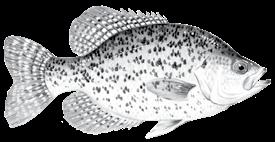
JOE POOL: Water lightly stained; 88 degrees; 2.13’ high. Largemouth bass are slow to fair on soft plastics. Crappie are slow. Catfish are fair on shading cut bait.
FAYETTE: Water stained; 95 degrees. Largemouth bass are fair on square-billed crankbaits, underspins, Carolina rigs and shaky heads. Catfish are slow.
LAKE O’ THE PINES: Water stained; 90 degrees; 2.21’ high. Largemouth bass are good on Texas-rigged worms, jigs and wacky rigs. Crappie are good on minnows under a cork. Catfish are good on cut bait and stink bait.
LAVON: Water lightly stained; 76 degrees; 2.60’ high. Largemouth bass are
fair on worms, senkos and spinner baits. White bass are good on slabs. Crappie are fair on minnows and jigs. Catfish are good on chicken liver, earthworms and punch bait.
LBJ: Water stained; 83 degrees; 0.22’ low. Largemouth bass are good on spinner baits, crankbaits and swimbaits. Crappie are good on jigs and minnows.
LEWISVILLE: Water stained; 87 degrees; 4.71’ high. White bass are fair on slabs, jigs and live bait. Hybrid stripers are fair on slabs. Crappie are fair on minnows and jigs. Catfish are fair on shad.
LIMESTONE: Water lightly stained; 94 degrees; 0.34’ low. Largemouth bass are good on top-waters, Texas rigs and swim jigs. Crappie are fair on minnows. White bass are good on silver spoons. Catfish are fair on shad.
LIVINGSTON: Water stained; 87 degrees; 0.52’ high. White bass are good on slabs.
MARTIN CREEK: Water lightly stained; 101 degrees; 0.42’ high.
minnows and jigs. White bass are fair on slabs. Catfish are good on shrimp and cut bait.
OAK CREEK: Water lightly stained; 80 degrees; 17.05’ low. Largemouth bass are fair on plastic worms and creatures. Crappie are good on minnows. Catfish are good on frozen shrimp, chicken liver and punch bait.
PALESTINE: Water lightly stained; 90 degrees; 0.19’ high. Largemouth bass are fair on Texas-rigged soft plastics. White bass are good on slabs. Hybrid stripers are fair on spoons. Catfish are good on cut bait and punch bait.
POSSUM KINGDOM: Water stained; 86 degrees; full pool. Largemouth bass are slow. Stripers are fair on live bait and spoons. Sand bass are slow. Catfish are fair on cut shad.
RAY HUBBARD: Water stained; 88 degrees; 0.09’ low. White bass are good on slabs and jigs. Crappie are good on minnows. Catfish are fair on cut shad.

Largemouth bass are good on weightless senkos and Texasrigged worms. Crappie are good on minnows and jigs.
MEREDITH: Water stained; 76 degrees; 46.68’ low. Largemouth bass are good on minnows and artificials. White bass are good on slabs and jigs. Walleye are good on minnows, grubs, and other artificial baits. Catfish are fair on crawlers, minnows, chicken liver and frozen shad.
NACOGDOCHES: Water stained; 92 degrees; 0.44’ low. Largemouth bass are good on crankbaits, Carolina rigs and drop shots. Crappie are good on minnows and jigs. Catfish are good on cut bait and live minnows.
NACONICHE: Water stained; 88 degrees; 0.50’ high. Largemouth bass are fair on Texas-rigged worms. Crappie are good on minnows. Catfish are slow.
NASWORTHY: Water lightly stained; 86 degrees. 0.52’ low. Largemouth bass are good on chatter baits, spinner baits and soft plastics. Crappie are good on jigs. Catfish are fair on cut bait and stink bait.
O H IVIE: Water lightly stained; 83 degrees; 30.36’ low. Largemouth bass are fair on soft plastics and swim baits. Crappie are good on
RAY ROBERTS: Water lightly stained; 83 degrees; 3.19’ high. White bass are good on jigs, slabs and crankbaits. Crappie are good on minnows. Catfish are good on punch bait.
RICHLAND CHAMBERS: Water lightly stained; 88 degrees; 0.41’ high. White bass are fair on top-waters and slabs. Hybrid stripers are good on live shad. Catfish are fair on punch bait.
SAM RAYBURN: Water stained; 90 degrees; 5.11’ high. Largemouth bass are good on top-waters, soft plastics and Carolina rigs. Crappie are fair on minnows and jigs. White bass are good on jigging spoons. Catfish are fair on cut bait and punch bait.
SOMERVILLE: Water lightly stained; 87 degrees; 0.63’ high. Crappie are slow. White bass are good on spoons and shad. Hybrids are slow. Catfish are fair on cut shad or punch bait.
SPENCE: Water stained; 85 degrees. 49.03’ low. Largemouth bass are slow. Catfish are good on cut bait and shrimp.
STILLHOUSE: Water stained; 85 degrees; 3.31’ high. White bass are fair on slabs and pet spoons.
n Saltwater reports Page 20
TEXOMA: Water stained; 75 degrees; 1.96’ high. Largemouth bass are slow. Striped bass are good on live bait, slabs and top-waters. Crappie are good on jigs. Catfish are good on punch bait.
TOLEDO BEND: Water lightly stained; 92 degrees; 1.04’ low. Largemouth bass are fair on soft plastics.
TRAVIS: Water stained; 87 degrees; 46.80’ low. Largemouth bass are fair on spoons, Texas rigs, shaky heads and swim jigs.
TWIN BUTTES: Water stained; 87 degrees; 36.44’ low. Crappie are slow. White bass are good on various artificial lures. Catfish are fair on cheese bait and fresh cut bait.
TYLER: Water stained; 80 degrees; 1.13’ high. Largemouth bass are good on crankbaits, plastic worms and top-water frogs. Crappie are good on minnows and jigs. Catfish are good on nightcrawlers, shrimp and liver.
WACO: Water stained; 80 degrees; 2.02’ high. Largemouth bass are slow. Crappie are good on live minnows and jigs. White bass are good on spoons and jigs. Hybrids are fair on swimbaits and live shad.
WALTER E LONG: Water stained; 84 degrees. Largemouth bass are good on worms. Stripers are good trolling.
WHITE RIVER: Water stained; 82 degrees; 20.74’ low. Largemouth bass are fair on soft plastics. Crappie are good on minnows. Catfish are good on shad.
WHITNEY: Water stained; 85 degrees; 0.11’ low. Largemouth bass are slow. Striped bass are slow. Crappie are slow. Catfish are fair on cut shad.
WORTH: Water stained; 87 degrees; 1.83’ low. White bass are good on slabs. Crappie are fair on jigs. Catfish are good on punch bait.
—TPWD
TAWAKONI: Water lightly stained; 87 degrees; 0.08’ high. Largemouth bass are good on frogs, crankbaits and soft plastics. White bass and hybrid stripers are fair on slabs and swimbaits. Crappie are fair on minnows. Catfish are good on punch bait and dip baits.

reds have been scattered and inconsistent in the area. He’s been targeting reds, after chasing trout, along shallow flats during the mid-morning and midday hours with live piggy perch.
“I’ve been cutting the tails and the top fins of the piggies, and this seems to produce a more aggressive bite from the redfish,” Regini said. “There’s been a lot of small reds mixed in, alongside mid to upper slot fish. You can catch several upper slot reds in an area on one day, and go back the next, and only find undersized fish. The reds just aren’t staying in specific areas for very long.”
Most of the redfish have been roaming flats in about 10-12 inches of water with shell beds and sand.
“Speckled trout limits have been coming quickly and easily, but not many folks around Rockport and Aransas Pass are catching limits of redfish right now,” Regini said. “The fish are constantly moving from day to day.”
The open bay waters of the Galveston Bay complex are beginning to see regular schooling action from large numbers of bull reds. Many anglers have reported big schools of oversized redfish busting along the water’s surface. These schools have had terns hovering over them, feeding on the shrimp and baitfish the reds are pushing to the surface.
Stretches of water north of the Bolivar Gas wells, and along the west side of the Houston Ship Channel in upper Galveston Bay, have held the most schooling activity. The fish have been hitting just about anything thrown at them while schooling, and most anglers are catching them on soft plastic jigs.

For home or office delivery, go to LSONews.com, or call (214) 361-2276, or send a check or money order to the address below. Lone Star Outdoor News, ISSN 2162-8300, a publication of Lone Star Outdoor News, LLC, publishes twice a month. A mailed subscription is $35 for 24 issues. Newsstand copies are $3, in certain markets copies are free, one per person. Copyright 2024 with all rights reserved. Reproduction and/or use of any photographic or written material without written permission by the publisher is prohibited. Subscribers may send address changes to: Lone Star Outdoor News P.O. Box 551695, Dallas, TX 75355 or email them to editor@lonestaroutdoornews.com.








Six individuals, five of whom were illegal immigrants, were arrested by Louisiana Department of Wildlife and Fisheries enforcement agents for alleged fishing violations for possessing over the limit of red snapper and possessing undersized red snapper, among other violations. Agents were on patrol in the Mississippi River when they observed a 20-foot bay boat occupied by six occupants heading north in the river. Agents stopped the vessel to perform a boating safety and creel inspection. During the inspection, agents found the men in possession of 120 red snapper, of which 97 were undersized.
On June 28, a Texas game warden received a call about a deceased fallow buck found on a property near CR 333 in Caldwell. It is believed that the fallow buck was unlawfully shot between June 25-28. Please call Operation Game Thief with any information. A reward is offered for information leading to the conviction of the responsible person(s).
The Texas Game Warden Aviation Unit assisted game wardens in South Texas with water safety and riverbed regulation enforcement. Wardens in the helicopter were able to relay information and points of interest to ground crews. The joint operation resulted in locating 30 vehicles, ATVs and UTVs illegally in and along the riverbeds with multiple cases pending. Aviation also aided wardens in the Port Aransas and Corpus Christi areas, flying the helicopter along beaches to look for water safety concerns.
Between July 4-6, 402 game wardens contacted 10,034 vessels, issued 1,326 citations and 1,794 warnings for various boating safety violations. Wardens filed 32 boating while intoxicated charges and five driving while intoxicated charges, two of which were drug related. Additionally, another 30 people were arrested for various other crimes. Game wardens, the Coast Guard and thousands of law enforcement officers across the
country participated in Operation Dry Water. This nationally coordinated enforcement campaign is designed to prevent boating under the influence. Wardens saw the number of BWI cases drop from 56 during the 2023 holiday weekend to 32 this year. They did, however, file five DWI cases compared to the four last year. The highest blood-alcohol concentration recorded by wardens over the holiday was 0.236. “As an agency, we have been participating in Operation Dry Water
since its inception in 2009,” said Cody Jones, Texas Game Warden assistant commander for marine enforcement. “We attribute the drop in BWI cases from last year in part to our outreach efforts about the dangers of BWI and increased patrols over the holiday.”
The TPWD boating education team traveled to multiple water bodies to conduct educational outreach regarding boating and water safety. While partnering


with several agencies, the team spoke with people launching 265 vessels, including 462 adults and 80 children at Canyon Lake, Lake Austin, Joe Pool Lake and Lake Tawakoni.
RESCUES, BOATING ACCIDENTS OVER FOURTH Texas game wardens conducted multiple open water rescues and responded to 22 boating accidents and five boating-related fatalities over the 4th of July holiday. Two fatalities occurred in the Gulf of Mexico near Galveston, two at Lake Ray Hubbard and one at Lake Conroe. Wardens also responded to four open water drownings: two at Lake Texoma, one at the Cedar Creek Reservoir and one in the Trinity River near Lake Livingston. In addition to the increased boating and water safety patrols for wardens over the holiday, they also assisted other first responders with medical emergencies, helped with multiple search and rescues, prevented a suicide attempt, provided first aid to an unresponsive individual before EMS arrived and more.

Remember when a hunter was measured by how well he shot, and not how much he spent? When memories were measured in curly tails, not dollar bills? We do. And that is why we created the Spandau S2. A reliable, extremely well balanced waterfowl gun built around the Inertia operating system for unmatched performance at a price that shows that you still know the true measure of a hunter.
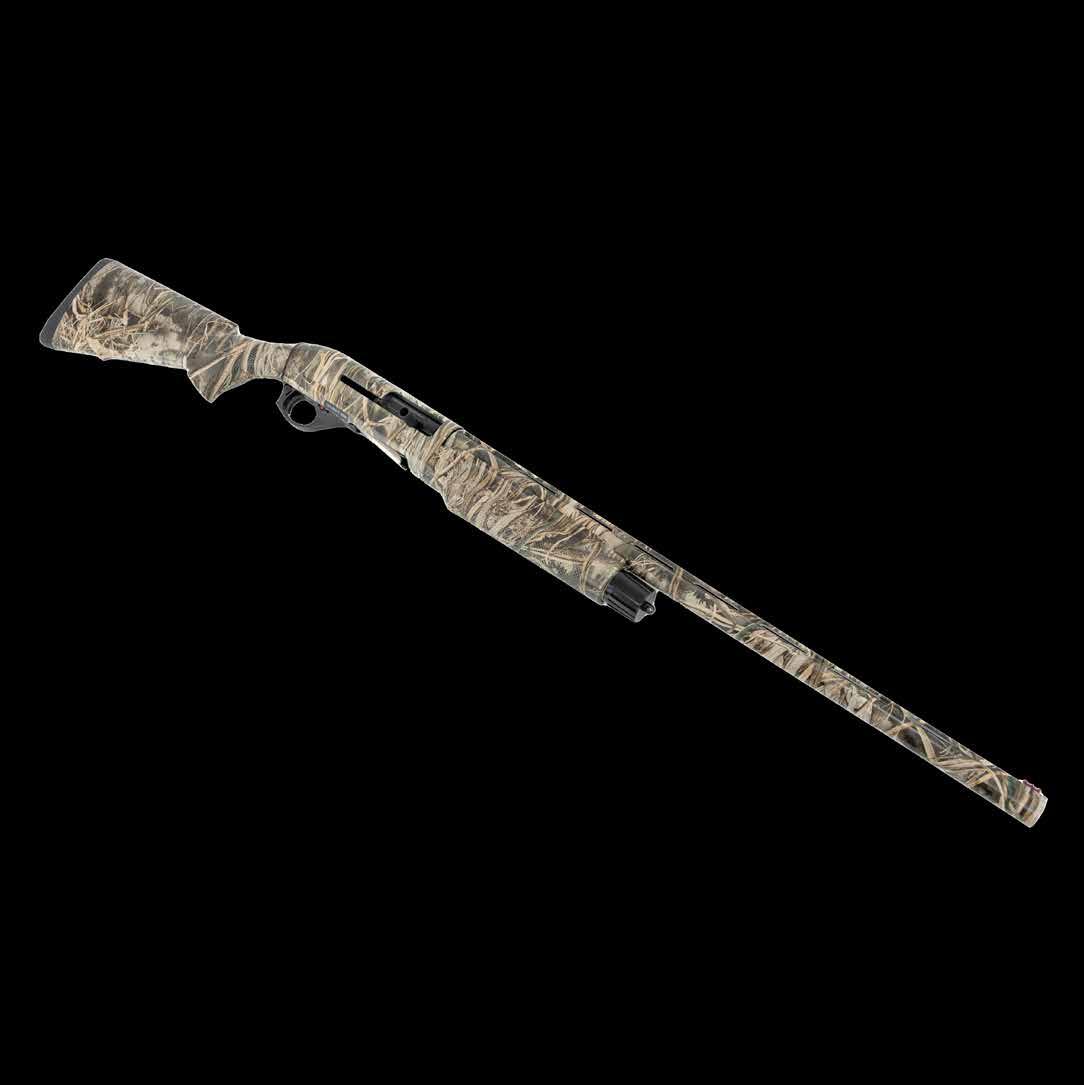




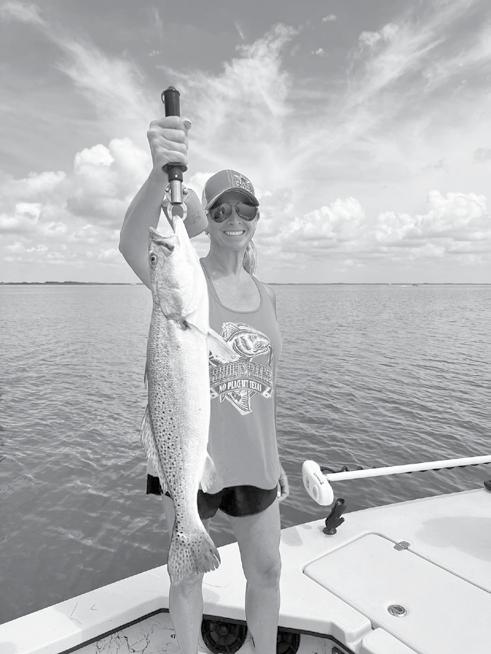


Kristy Jackson landed this speckled trout In Baffin Bay while fishing with Capt Chris Shindledecker



29
30 Tue 1:38 7:52 2:06 8:20 06:39 08:15 1:56a 4:40p
31
4:11 10:25 4:38 10:52 06:40 08:13 4:39a 7:26p
03 Sat 5:02 11:15 5:28 11:40 06:41 08:12 5:40a 8:07p
04 Sun 5:51 ----- 6:15 12:27 06:42 08:11 6:41a 8:43p
05 Mon 6:40 12:28 7:02 12:51 06:42 08:10 7:41a 9:14p
06 Tue 7:26 1:16 7:47 1:37 06:43 08:10 8:37a 9:41p 07
08 Thu 8:56 2:47 9:16 3:06 06:44 08:08 10:24a



Aug
Continued from page 1
“I would do this hunt again in a heartbeat,” Woodward said. “I fell in love with Cibolo Creek. My goal was not to find a giant, but I was looking for something with character.”
Woodward described this hunt as one where she prioritized her patience which allowed her to find something very special.
Cibolo Creek is located in the Chinati Mountains of West Texas. The impact this experience had on Woodward enhanced her belief of Texas having endless hunting opportunities.
“There were seven or eight good rams in front of us, and as they started to trickle out, one caught not only my eye, but also the eye of my guide, Trent Whitesell,” Woodward said. “As soon as Trent got excited, I knew this was the one.”
At 260 yards away from the ram, Woodward said she took one shot with the yet-tobe revealed 6.5 PRC rifle and a Trophy Grade Long Range 142-grain ABLR bullet. The 32inch ram was down immediately.
Continued from page 8
a top-water spook several days after the storm.
“There’s still plenty of good-sized trout up shallow early in the morning before 7 a.m.” he said. “They are still feeding aggressively on topwaters. It’s only been a week (after the storm) and we’re back to early mid-June surf action.”
“That is our active long-range bullet we launched already, but it is tried and true, so many of us still hunt with it,” Woodward said. “It is good to use our products on our hunts so we can market them accurately.”
Currently in her fourth year with Nosler, Woodward said she has been hunting for as long as she can remember. This industry has not only allowed her to put food on the table for her family but provide lessons she believes can only be taught through experience.
“Hunting scenarios allow you to test your mind and body,” Woodward said. “You find what you are really made of, and it is something you cannot just read in books or learn in school. It is something you have to learn for yourself and push and test yourself to see what you are made of.”
Woodward believes the hardships instilled confidence to overcome challenges and cherishes the camaraderie made as a major part of the hunting experience.
Continued from page 8
although boats returning from the Deep Sea Roundup, taking place at the time, were allowed to slowly return to the docks. According to tournament officials, the Todo Bien was not participating in the offshore fishing tournament.
Colin Ocker, the co-owner of the boat, was found dead near the wreckage of his boat shortly after the collision. Ken Culbreth, of Corpus Christi, was hospitalized for a leg injury and Vic Huff, also of Corpus Christi, was treated and released.
The 43-foot Todo Bien was removed from the channel by TowBoatU.S. Port Aransas, operated by Justin and Austin Nesloney, who spent 36 hours working on the recovery, according to an interview in KIII-TV.
The cause of the crash is under investigation.



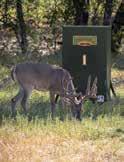















Solution on Page 22

ACROSS
1) An African antelope
4) Kenedy County’s seat
6) One of the crappie
8) A wood used to make longbows
10) Taylor County’s seat
12) Granbury’s county
13) Hunting boot brand
15) Tractor brand in red
18) Sinker type
20) Elk hunters’ org.
22) Shotgun brand
23) Ammo brand
25) Group of cobras
27) One of the bass
29) The big crappie
31) Decatur’s county
33) Coastal bay
35) A deer favorite
39) Namibia’s capital
41) A Great Lake
42) Leakey’s county
43) Safari destination
44) Shotshell brand
45) East Texas lake
DOWN 2) International hunting org. 3) Reel type 4) The stinky furbearer 5) Smith County’s seat 6) Falfurrias’ county 7) Alligator or spotted 8) A newer shooting sport 9) Trout species 11) Rifle, ammo brand
13) Group of quail
14) Blue, white or striped
16) Duck-hunting province
17) An African game bird
19) Laredo’s county
21) Shotgun type
24) Group of giraffe
26) The fledgling swan
28) Crankbait brand, ___ Craft
30) West Texas river
31) Worm rigging style
32) Fishing line brand
34) Popular lure color
36) Slang for the drake pintail
37) Fishing hook maker
38) Wood used in arrow shafts
39) DFW-area lake
40) Duck decoy brand

Legacy1846 Outdoor Group appointed Andrew Sibble as the company’s chief executive officer.
SilencerCo acquires Zev Technologies
SilencerCo announced its pending acquisition of certain business operations of Zev Technologies, a firearm and firearm parts manufacturer.
Sales manager at TAG Precision
Ian Pual has joined TAG Precision as sales manager.
KSE Media Ventures promoted Jeni Swanson to chief financial officer.
Bridle Buddy acquired
Rec-Com Outdoors (previously Hi-Liner Fishing Gear & Tackle) has acquired Bridle Buddy, a provider of live bait rigging systems.
joins
Jamie Wilkinson was named the new executive vice president of programming and production at Outdoor America.
Kersker promoted to sales VP
American Outdoor Brands promoted Pete Kersker to the newly created position of vice president of sales - outdoor sports.
Denise Welker was named the next president of Weatherby Foundation International, the organization’s first female president.

2 lbs. venison round steak
1/4 cup flour
3/4 tsp. salt
1/4 tsp. pepper
3 tbsps. cooking oil
1 cup water
1 1/2 tsps. instant beef bouillon granules
1/2 tsp. dry mustard
2 tbsps. butter
3/4 cup chopped celery
1 cup grated American cheese
1/2 tsp. thyme
1/2 cup chopped onion
1/3 cup soft breadcrumbs
1 tsp. finely chopped fresh parsley
1/4 cup cold water
2 tbsps. cornstarch
Cut meat into serving sized pieces that are longer than they are wide. Mix 1/4 cup flour, salt and pepper. Pound mixture into both sides of each piece of meat. Cook celery, onion, and parsley in butter until tender but not brown, and remove from heat. Stir in cheese and breadcrumbs.
Spread 1/4-1/2 cup cheese mixture on each steak. Roll steaks up, jelly-roll style, and secure with toothpicks. Brown steaks in oil. Drain excess oil, then add 1 cup water, bouillon, mustard and thyme. Cover and cook 2 1/2 hours. Blend cold water with cornstarch and stir into pan drippings to make gravy.
—Missouri DOC
1/2 cup flour
6 tbsps. margarine
2 tsps. lemon juice
Salt and pepper
1 medium onion, thinly sliced and separated into rings
4-6 catfish fillets
Favorite barbecue sauce
2 large sheets heavy aluminum foil
Preheat oven to 425 degrees. Melt the margarine and stir in the lemon juice. Line a baking sheet with one sheet of the aluminum foil and coat it with half of the margarine and lemon mixture. Rinse and gently dry the fish fillets. Lightly coat the fillets with flour and place on the foil. Pour a strip of barbecue sauce down the center of each fillet. Place onion on top of fillets and drizzle with remaining margarine and lemon mixture. Add salt and pepper to taste. Place foil over top and crimp all around. Place on rack and cook until fish flakes and onions are done, about 12-15 minutes.
—Michigan Div. of Environmental Health
Chris Caldwell will serve as the newest Arkansas Game and Fish Commissioner after being appointed by Gov. Sarah Huckabee Sanders. Caldwell’s seven-year term will last until 2031.
“Chris is a great friend and trusted advisor. I know how much he loves Arkansas, how much he adores hunting and fishing and the Arkansas way of life, and how hard he will work every single day in this role,” Gov. Sanders said.
“Hunting and fishing have always been a big part of my life, and I’m proud to join the Arkansas Game and Fish Commission and help provide the same opportunities I enjoyed to every kid and family in Arkansas,” Caldwell said.
—AGFC
Minnesota’s ruffed grouse spring population counts are similar to last year and to other recent peaks in the 10-year population cycle of grouse — a pattern recorded for 73 years.
The Minnesota Department of Natural Resources and its partners use spring drumming counts to help monitor the ruffed grouse breeding population through time.
Warm temperatures and dry conditions that favor high nest success and chick survival the last few years may partly explain the quicker than expected rise to peak levels in the 10year cycle.
Nesting success and chick survival during the spring and summer are among the factors that influence the number of birds present in the fall. These factors can be reduced by heavy rain during June when nests are hatching and chicks are young.
—MNDNR
The Association of Collegiate Anglers, in working with the Ely family and Bass Pro Shops/White River Marine Group, announced the Travis Ely Memorial Scholarship.
Travis Ely, a former member of the Purdue University Bass Fishing Team, passed away in a car accident on Oct. 16, 2023 while returning back to school from a bass fishing tournament.
The Travis Ely Memorial Scholarship has been created to carry on Travis’ memory and will honor an active college angler for his/her impact both on the water and in the community.
This scholarship will be awarded to a student angler who exemplifies great success, character, sportsmanship, and work ethic, just like Travis, both on the water and around the community.
New regulations announced by the Canadian Wildlife Service, beginning this fall, provide that all hunters pursuing dark geese in Saskatchewan will be able to hunt one-half hour before sunrise to one-half hour after sunset throughout the entire season. Previously, hunters were restricted to hunting only mornings through mid-October, accounting for over 40 percent of the Province’s waterfowl season.
—Gov’t. of Saskatchewan


Continued from page 4
purchase, etc.). There is no requirement to report ammo sales to the government and American Rounds does not keep customer purchase information. There is an option to include your email address in the purchase, and American Rounds will be able to give you updates on the availability of ammo in the store near you. But you can also skip this step and use the checkout feature similar to an online shopping cart purchase.
On a recent trip to the Canyon Lake site, the machine was undergoing an update, so the technician was able to show the inside of the machine. Heavy, double steel secures the ammunition within the machine and boxes of ammo are selected and delivered using air suction. Each machine carries rifle, shotgun and handgun ammo, though each can be customized to local favorites and can be changed season-
ally. Buyers can even email the company and request specific caliber/bullet choices. Prices shown on the machine in Canyon Lake are comparable to store shelf prices.
Majers described the machines as 2,000-pound, triple-locked, doublewalled steel boxes that are installed indoors, monitored by security cameras and restocked only by vetted staff members.
The idea behind the machines is to make ammo more secure than boxes sitting on an open shelf, while making them more convenient than waiting on a clerk to come and deliver ammo. The technology involved in assuring the buyer is legally able to purchase ammo eliminates the human factor in over-the-counter sales.
Combined with their placement in rural areas without a nearby gun store, American Rounds may have struck a technological solution for some shooters.





















Continued from page 1

SABINE LAKE: 86 degrees. Speckled trout are good live shrimp under a popping cork. Black drum are fair on free-lined live shrimp. Redfish are fair on soft plastics.
BOLIVAR: 82 degrees. Redfish are good on soft plastics and live shrimp. Black drum, speckled trout and sharks are good along the north jetty on live bait and cut bait. Bull reds and black drum are good on live and cut mullet.
TRINITY BAY: 88 degrees. Speckled trout

are slow. Black drum and redfish are fair on live shrimp.
EAST GALVESTON BAY: 89 degrees. Speckled trout are fair on soft plastics, live croaker and live shrimp. Black drum and redfish are fair on live shrimp.
GALVESTON BAY: 90 degrees. Speckled trout are fair on live shrimp and live croaker. Black drum, sheepshead and redfish are fair on live shrimp.
WEST GALVESTON BAY: 89 degrees. Speckled trout and redfish are fair on live shrimp, live croaker and artificial lures. Redfish are fair on live shrimp.
TEXAS CITY: 88 degrees. Speckled trout, redfish and black drum are fair on live shrimp under a popping cork and finger mullet fished along the bottom.
FREEPORT: 88 degrees. Speckled trout, redfish and flounder are good on live shrimp, live croaker and soft plastics.
EAST MATAGORDA BAY: 84 degrees. Speckled trout are good on, live croaker, live shrimp and soft plastics. Redfish are good on live shrimp and soft plastics.
WEST MATAGORDA BAY: 84 degrees. Red-
PORT O’CONNOR: 90 degrees. Speckled trout are good on live croaker. Redfish are good on fresh blue crab. Black drum are fair on dead shrimp.
SAN ANTONIO BAY: 88 degrees. Redfish are good on cut bait. Black drum are fair on dead shrimp. Speckled trout are fair on live shrimp and soft plastics.
ROCKPORT: 84 degrees. Speckled trout are good on croaker. Redfish are good on shrimp and cut skipjack or mullet. Black drum are good on live or dead shrimp.
REDFISH BAY: 90 degrees. Speckled trout are good on croaker and piggie perch. Redfish are fair on spoons and soft plastics. Black drum are good on dead shrimp.
PORT ARANSAS: 84 degrees. Redfish are good on shrimp and cut bait. Speckled trout are good on croaker and shrimp. Surf fishing has been producing reds and trout in the first and second gut.
CORPUS CHRISTI: 90 degrees. Speckled trout are good on croaker and piggie perch. Redfish are fair on cut perch. Black drum are fair on dead shrimp.
BAFFIN BAY: 90 degrees. Speckled trout are good on top-waters and soft plastics. Redfish are good on spoons and soft plastics.

PORT MANSFIELD: 92 degrees. Speckled trout are good on soft plastics and top-waters. Redfish are good on spoons, soft plastics and top-waters. Flounder are fair on soft plastics.
SOUTH PADRE: 90 degrees. Speckled trout are good on soft plastics and shrimp under a popping cork. Redfish are fair on live shrimp.


Koberna has been spending most of his time on Lake Ray Roberts, where he’s been targeting fish in shallower water where there is less current.
“Crappie do not have a streamlined shape like a trout, and they have to work hard to stay in a specific area when there is a lot of current,” Koberna said. “I’ve found that they typically won’t feed, at least not aggressively, when they are fighting against a strong current. When water is being let out of a lake, there tends to be less current in shallower water, away from the main river or creek channels. So I try to find crappie in shallower areas with less current, because those fish seem to be more aggressive.”
Koberna said when water is being let out of Ray Roberts, he often sees crappie on his forward-facing sonar, hunker down, deep in brush piles to rest and get out of the current as much as possible.
“When they hunker down like that, they can be extremely hard to catch,” Koberna said. “That’s why I don’t fish deep brush piles when water is being let out of the lake. I try to get as far away from the current as possible.”
Timber in 4-12 feet of water along feeder creeks and ditches off the main creek channel have been producing the best action for Koberna and his anglers. He’s been covering water and bouncing from tree to tree to catch crappie willing to feed. Both minnows and jigs have been drawing strikes.
Guide Dillon Gossett, has been chasing crappie on Lake Bob Sandlin recently, where he said the bite has been fairly steady.
“I live a lot closer to Lake Fork, but the fish have just been much more scattered on that lake this summer compared to the previous couple of years,” Gossett said. “I think it’s due to the higher-than-normal water levels.”
On Bob Sandlin, Gossett has been fishing timber in about 10-18 feet. He said the crappie have been grouping up in larger numbers later in the day after the sun rises.
“Areas with two to four trees together are holding the most fish, rather than just a single tree,” Gossett said. “I’m having to cover a lot of water to catch numbers of fish. You can catch two or three crappie when you find them, and then they’ll move off and you’ll have to hit a new stretch of timber.”
Gossett said casting jigs to the fish, rather than getting directly over the top of them, has been productive as well.
Continued from page 1
marshes, and speckled trout have been gorging on them,” he explained. “There also have been good numbers of redfish over deeper, mid-bay reefs which also pulled out of the marsh after the storm.”





Ging and his anglers have been catching both speckled trout and redfish while drifting open water in the middle of East Matagorda Bay on soft plastics and live shrimp. Most of the trout have been in the 16-18-inch range, with some smaller fish mixed in, and the occasional fish over 20 inches. The redfish have been mostly within the 20- to 28-inch slot.
Sargent-area anglers Riley Freese and Chris McKinley made a wade-fishing trip in East Matagorda Bay just a week after Hurricane Beryl passed, and found decent numbers of trout from 17-23 inches while chunking soft plastics.
McKinley said there was a lot of runoff flowing down Caney Creek and into the ICW in Sargent.
“The water coming out of the creek looked like black coffee, but it had good clarity to it,” he said. “Sargent got hit pretty hard by the storm. Not many folks have taken a break from making repairs and cleaning up their properties to hit the water, but the ones that have are catching fish. All of the local boat ramps seem to be open and functional.”
As of July 17, Freeport guide Capt. Mike Segall said Freeport officials were only allowing access to the area to Freeport homeowners, property owners and business owners. Decisions about opening marinas, harbors and boat ramps to the public had not yet been made.

Segall said calm weather immediately following the storm resulted in some excellent speckled trout catches along the beach for anglers that were able to hit the surf.
“Most Freeport-area guides had to reschedule their trips that were supposed to take place over the two weeks immediately following the storm’s arrival,” Segall said.
In Galveston Bay, Capt. Ryan Battistoni said stretches of water around the Texas City Dike were in good shape and holding plenty of speckled trout soon after Beryl passed through.
“Some marinas and boat ramps were open and accessible, while others have remained closed due to damage,” he said.
Ally Outdoors Midland |432-203-3661
Alpine Range Fort Worth |817-478-6613
Apache Rifle Works Comfort |830-995-3894
Ark-La-Tex Guns & More Gilmer |903-680-4867
Athena Gun Club Houston |713-461-5900
BPS Outfitters Sherman|903-892-2227
Burdett and Son Outdoor College Station |979-695-2807
Carroll's Gun Shop Wharton |979-532-3175
Clay Shooters Supply Dallas |214-347-4913
Collectors Firearms Houston |713-781-1960
Defender Outdoors Fort Worth|817-935-8377
Dury's Guns San Antonio |210-533-5431
East Texas Pawn Lufkin |936-639-3322
Fehner & Son Gonzales |830-672-3710
Field & Streams Sporting Goods San Angelo |325-944-7094
Fun Guns Waco |254-755-0080
Gordy & Sons Outfitters Houston |713-951-0100
Guard & Defend Firearms Silsbee |409-201-9468
Hootens Emory |903-473-8788
Johnny's Sport Shop
Eagle Lake |979-234-3516
Magnolia Hunting Supply Magnolia |281-766-1045
McBride's Gun Austin |512-472-3532
Uvalde |830-278-4000
Outdoorsman San Angelo |325-947-8859
Parker County Gibson Products Weatherford |817-594-8711
Ray's Hardware & Sporting Goods Dallas |214-747-7916
Riflegear The Colony |972-292-7678 SK ARMS Flowermound |972-628-6200
Sportsman's
Tyler |903-617-6141
Texan Guns and Gear Stephenville |254-965-9099
Texas Gun Experience Grapevine|817-285-0664
Texian Firearms Houston|346-775-8363
Trinity Armory Cleveland|281-659-2800
Wilkerson’s Gun Shop Boerne|830-388-7205
Wings & Whitetails Carthage|903-693-6129
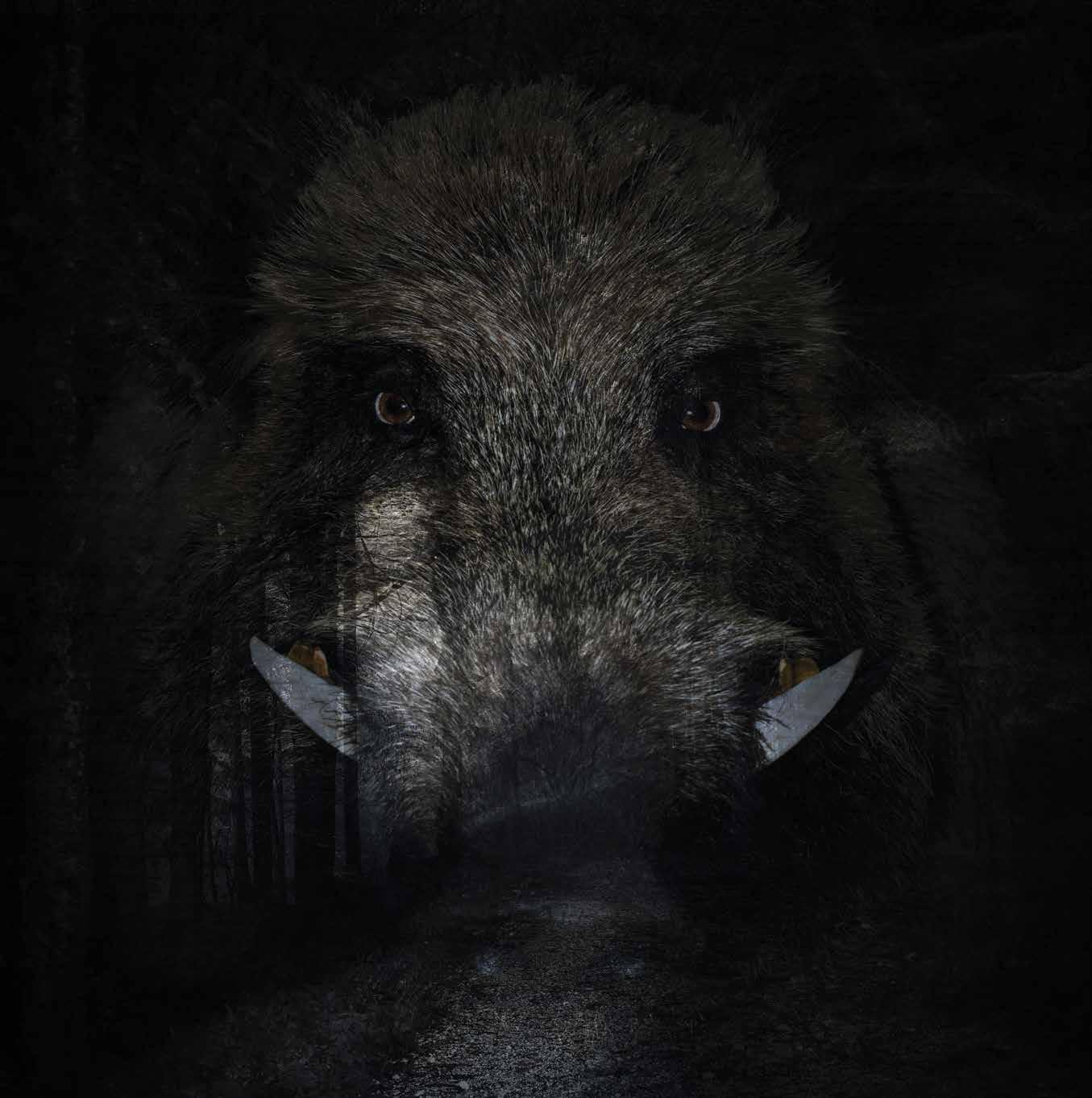
Game-changing simplicity. Industry leading runtime. Onboard video, photo and HD audio recording. Meet the new AVENGER from Fusion Thermal.
AVENGER 40
WAVE12 384 Sensor
9+ Hour Runtime
MSRP: $4099


AVENGER 55XR
WAVE12 640 Sensor
7+ Hour Runtime
MSRP: $5989

Available at fine retailers all across the Great State of Texas
Micro Click Focus
Leave the Collars to the Dogs
Getting your target into focus quickly and easily is a must, and you won’t find a better system than our Micro Click Focus. Our tactile focus knob is conveniently located on top of the front lens, and unlike the dog collar design used by our competitors you won’t need to perform a circus act just to focus your scope. Plus, you’ll always get your best shot as the micro click adjustments put you on the perfect focus point every time.
ARCLIGHT Ultra HD Germanium Lens
High Purity for Maximum Energy
The single most expensive component of a well-crafted thermal is its germanium lens. If you skimp here, you’re not even in the game. Our high purity ArcLight Ultra HD Germanium Lens is the crowning jewel of our technology package. It perfects the task of collecting and funneling infrared energy into the thermal sensor unhindered by distortion. This clean transition results in an infrared energy dump that unleashes the full potential of our WAVE thermal sensor delivering a user experience well beyond expectations.
KISS (Keep It Simple Stupid) Menu Industry’s Easiest Menu System
We think you’re really going to like our menu; it uses words, English words. Written for Americans by Americans. That’s why we called it KISS. You’ve heard the phrase, and at Fusion Thermal it’s the reason we can make the industry’s boldest statement: Our operating system is so easy to use you’ll likely never read the instructions.
T3 Control System
Don’t Let Your Fingers Get Lost in the Dark
Our highly intuitive three button control system with center tower makes using your scope simple and easy. Every command is at your fingertips, and the Center Tower evenly splits the control panel, so you’ll never be confused about what button you’re going to press. We thought this a particularly good idea since you’ll be using it in the dark most of the time.

WAVE Thermal Sensor
Same Money, Better Performance
Is it possible for one thermal scope to dramatically outperform everything else in its class? Yes, so don’t make the mistake of shopping by specifications alone or you just might get burned. Our WAVE thermal sensors push the limit of what is technically possible and set the standard for image quality, ruggedness, and long life. So, before you plop down your hard-earned cash make sure you do a side-by-side to any similarly priced competitive alternative. We think you’ll find the difference to be clearly obvious.
XGEN Alloy Housing
Plastic is for toys. Metal is for tools. It’s a fact, thermals produce heat, and heat is the enemy of all thermal devices. If you don’t get the heat out operational performance will degrade, and long-term internal damage is a certainty.
Our XGEN (Next Generation Alloy Body) shields your expensive investment in a metal clad of armor, and our high-end AL6082 Conductive Structural Alloy displaces heat at an astounding 71,900% better than plastic. You don’t think of your thermal as some cheap plastic toy. Why should it be built like one?
JULY 27
DSC NEW MEXICO
Annual Gala Isleta Resort & Casino Albuquerque dscnewmexico.com
ROCKY MOUNTAIN ELK FOUNDATION
Texas Gulf Coast Banquet Knights of Columbus Hall Pearland (281) 245-9723 rmef.org
JULY 31-AUGUST 4

TEXAS INTERNATIONAL FISHING TOURNAMENT South Padre Island (956) 943-8438 tift.org
AUGUST 1-4
EXOTIC WILDLIFE ASSOCIATION
Congressional Fundraiser
Embassy Suites San Marcos (830) 315-7761 myewa.org
AUGUST 1
DUCKS UNLIMITED
Cibolo Creek Banquet
Mikulski Hall, Schertz (210) 332-7133 ducks.org
MULE DEER FOUNDATION
Central Texas Beers 4 Deer
Mesquite Creek Outfitters, Georgetown (325) 277-6770 muledeer.org
ROCKY MOUNTAIN ELK FOUNDATION
Texas Mainland Chapter Banquet Showboat Pavilion, Texas City (409) 750-1450 rmef.org
AUGUST 2-4
TEXAS TROPHY HUNTERS ASSOCIATION
Houston Extravaganza NRG Center huntersextravaganza.com

AUGUST 5
SAFARI CLUB INTERNATIONAL
Houston Chapter Event Wyndham Hotel, Houston scihouston.org
AUGUST 8
DALLAS SAFARI CLUB
Member Dinner and Movie Northwood Club (972) 980-9800 biggame.org
AUGUST 9
NATIONAL WILD TURKEY FEDERATION
Highland Lakes Banquet
John L. Kuykendall Center Llano (830) 385-6059 nwtf.org
AUGUST 9-11
SPI CHAMBER OF COMMERCE
Ladies Kingfish Tournament
SPI Convention Center (956) 761-4412 spichamber.com

AUGUST 16-17
TEXAS DEER ASSOCIATION
Annual Convention
JW Marriott Hill Country Resort
San Antonio (512) 499-0466 texasdeerassociation.com
AUGUST 16-18
TEXAS TROPHY HUNTERS ASSOCIATION
San Antonio Extravaganza Freeman Coliseum Expo Hall huntersextravaganza.com
AUGUST 17
DELTA WATERFOWL
Longview Banquet Maude Cobb Convention Center (903) 235-7296 deltawaterfowl.org
DUCKS UNLIMITED
Lake Ray Roberts Dinner
Lone Star Lodge and Marina Pilot Point (619) 654-1341 ducks.org

TEXAS TROPHY HUNTERS ASSOCIATION
Fort Worth Extravaganza Fort Worth Convention Center huntersextravaganza.com
AUGUST 10
ROCKY MOUNTAIN ELK FOUNDATION
North Texas Banquet
Embassy Suites, Grapevine (214) 693-8523 rmef.org
AUGUST 15
NATIONAL WILD TURKEY FEDERATION
Golden Crescent of Texas Banquet
Victoria Community Center (361) 676-7433 gcnwtf.org
NATIONAL WILD TURKEY FEDERATION
Blackland Prairie Banquet
Knights of Columbus Hall, West (254) 855-2902 nwtf.org
AUGUST 17-18
TEXAS GUN AND KNIFE SHOWS
Abilene Convention Center (830) 285-0575 texasgunandknifeshows.com
AUGUST 22
DALLAS SAFARI CLUB DSC 100 Kickoff Party DSC Headquarters (972) 980-9800 biggame.org
AUGUST 23
DELTA WATERFOWL Alamo Chapter Banquet Aggie Park, San Antonio (210) 289-2152 deltawaterfowl.org







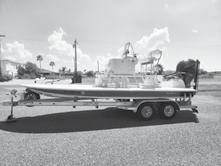



solution from Page 18


